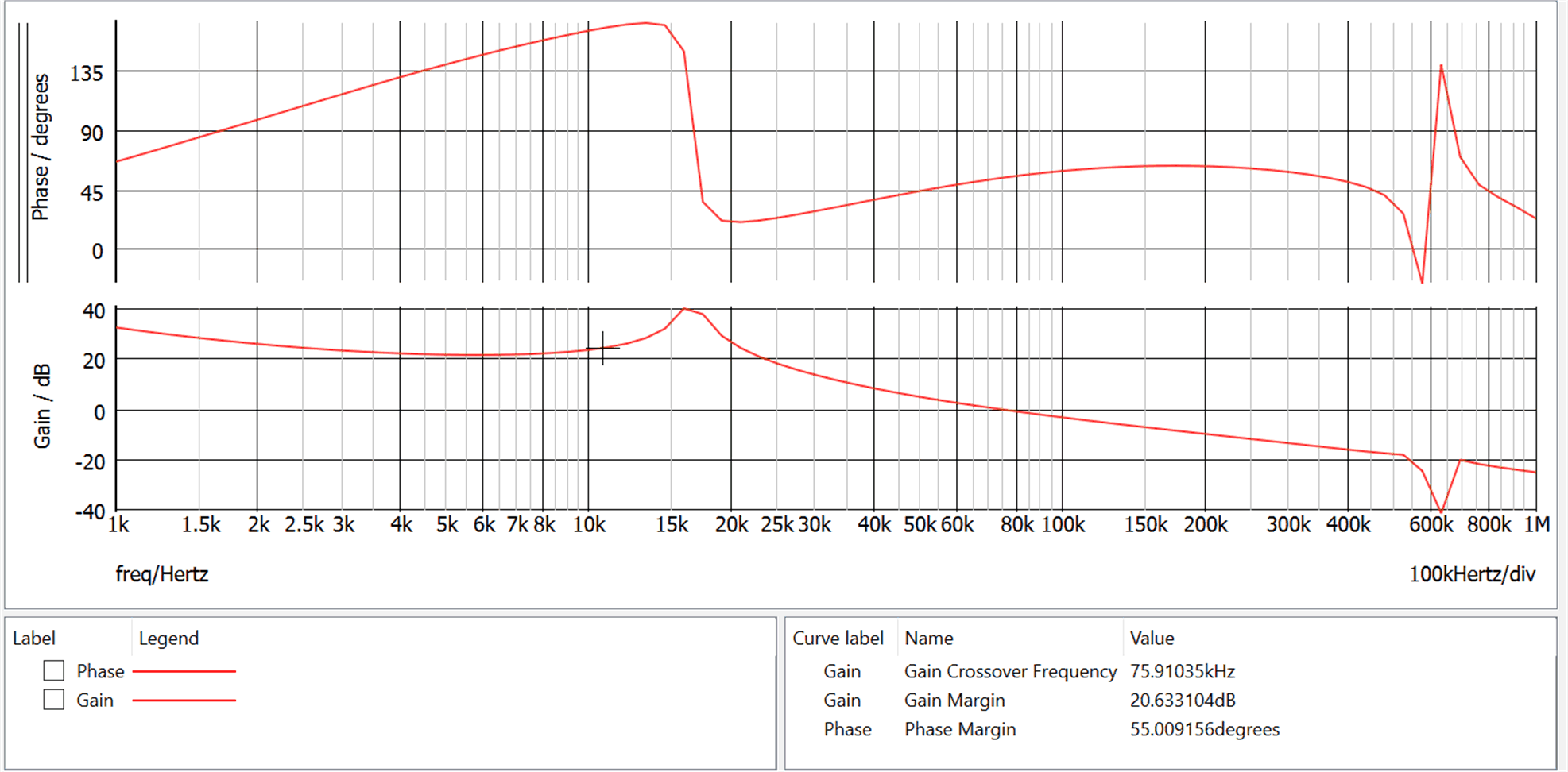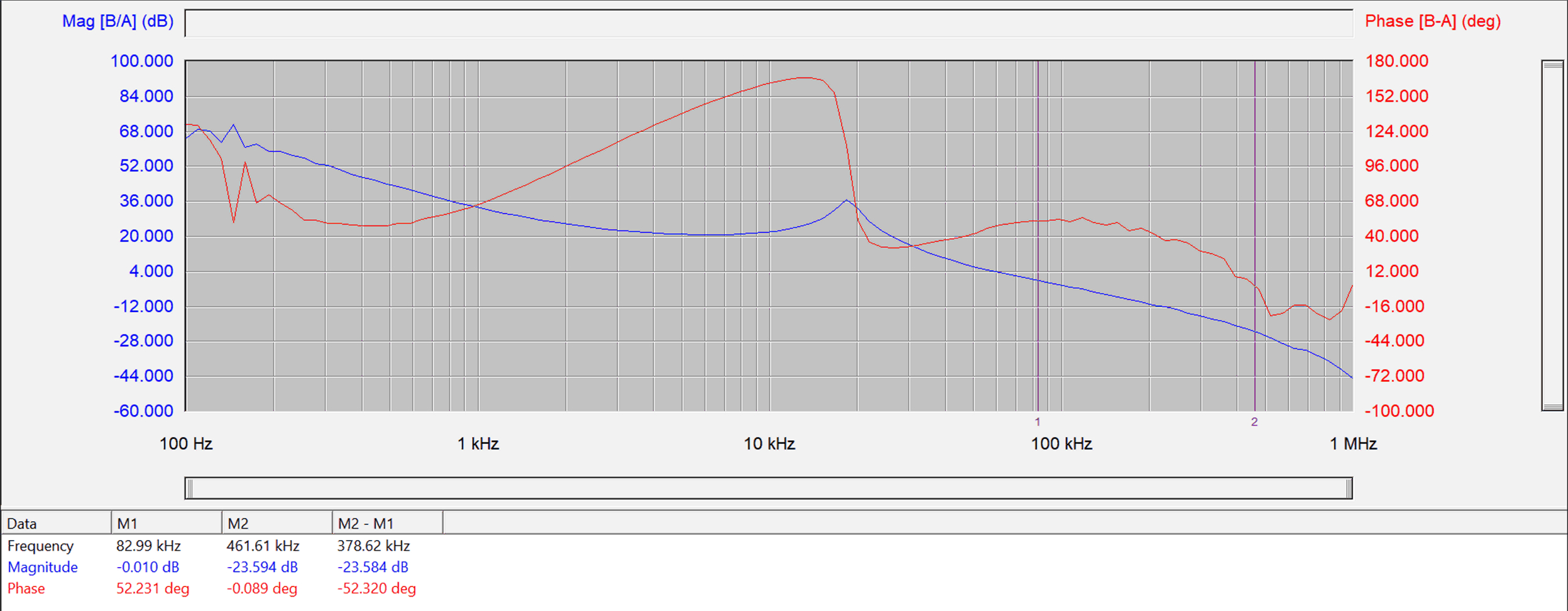SLVAF11 June 2021 TPS51397A , TPS566231 , TPS566235 , TPS566238 , TPS568230
5 Simulation and Experimental Verification
The example in Section 4 is verified by Simplis simulation first. As shown from Figure 5-1 that the crossover frequency is 75.9kHz and the phase margin is 55 degree with chosen components. That accords with the theoretical estimated results 77kHz and 57.7 degree and it’s proven that phase margin is enough with the proposed application design method.
 Figure 5-1 Bode Plot from Simplis
Simulation
Figure 5-1 Bode Plot from Simplis
SimulationThe experiment result is shown in Figure 5-2. The crossover frequency and phase margin are 82.99kHz and 52.2 degree respectively, which are close to the theoretical analysis and also prove the effectiveness of proposed application design method for stability.
 Figure 5-2 Bode Plot from Experimental
Verification
Figure 5-2 Bode Plot from Experimental
Verification